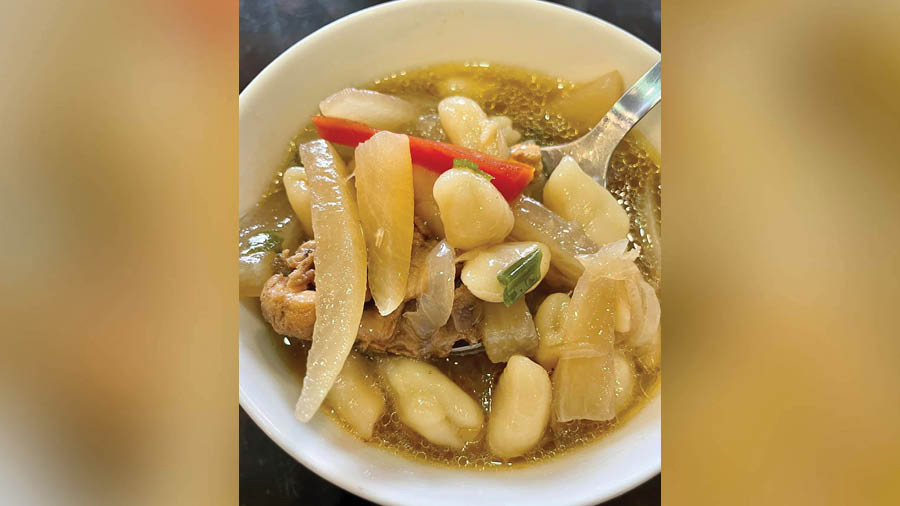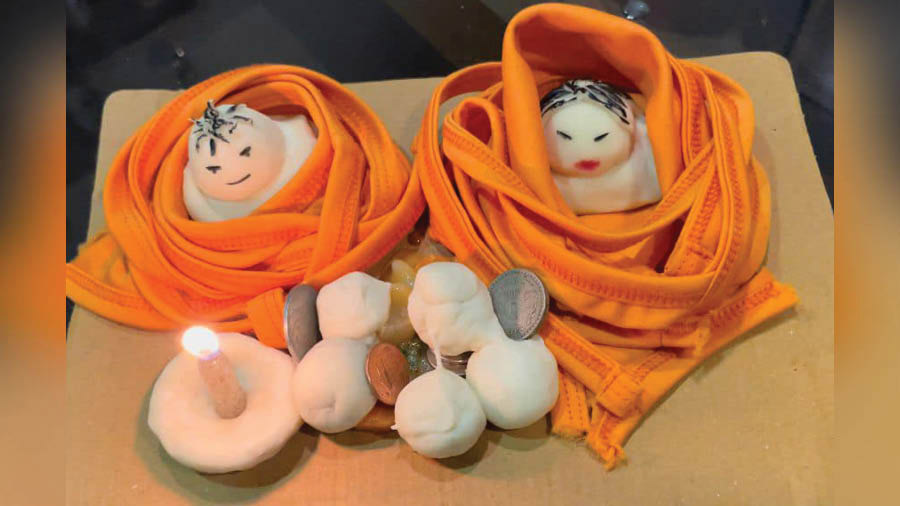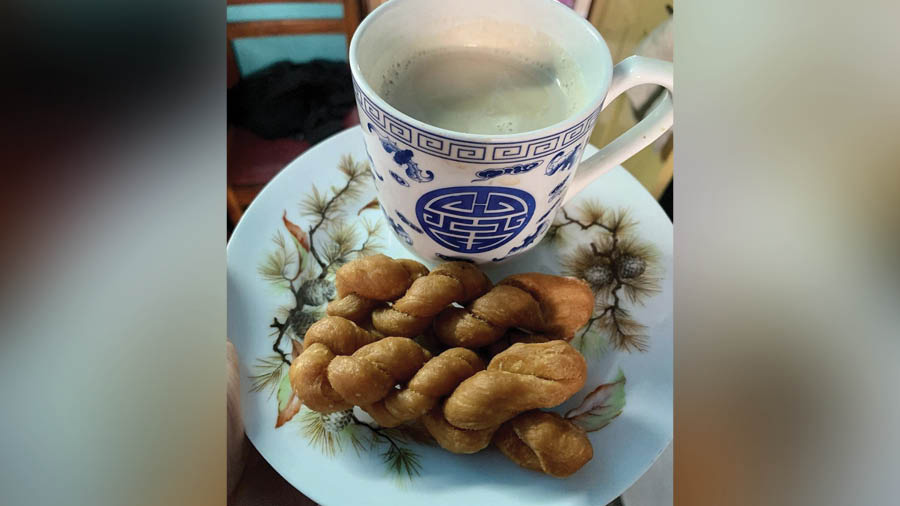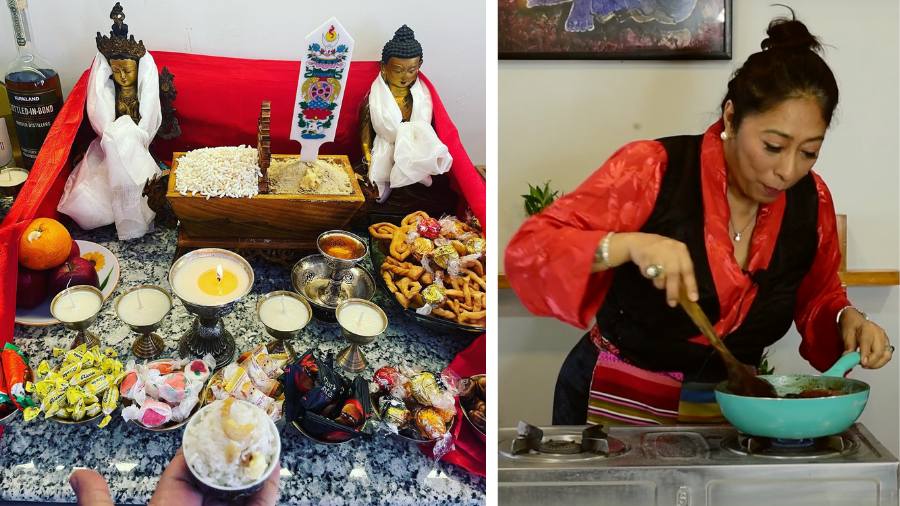Losar Tashi Delek! Or Happy Tibetan New Year!
This year is the Year of the Water Rabbit, which symbolises a year of hope. Losar is traditionally celebrated for 15 days, and some of our seniors in Kalimpong and Darjeeling still celebrate it over this length of time. Most of us however continue the celebrations for three days and on the 10th or 15th day of the new year, the altar is cleaned.
On the eve of Losar (which is the second-last day of the last month of the Lunar Calendar), we clean the house and altar and await the New Year. The cleaning is done through a beautiful and meaningful process. We make a noodle soup with nine ingredients. The dish is called guthuk, ‘gu’ means ‘nine’ and ‘thuk’ is for ‘thukpa’. This year, the nine ingredients I used were maida (to make the shell-shaped noodles), chicken (for the broth), garlic and meat (which was stir-fried with soya sauce, salt and pepper, and then added to the broth) along with vegetables like spinach, radish, carrot, onion, spring onions and tomatoes.

‘Guthuk’, the noodle soup with nine ingredients made during Losar
We put a little ball of dough in each bowl of noodle soup. The dough has things like chilli, cotton, coal, thread etc inside it. Sometimes, we write it on a piece of paper instead. If you get chilli in your dough ball, it symbolises a fiery temper, cotton means a soft heart, coal indicates a black heart, salt means you’re lazy and so on.
After the meal, we take another small piece of dough, put a few drops of guthuk on it, and rub it over ourselves to cleanse the body and soul. We believe it removes all our negativity, pain or bad luck. We put the dough near the small maida figurines, and a coin is also placed there after we pray.

Dough balls and coins placed in front of small dough figurines
A member of the house is supposed to take these dough balls, and leave them at a nearby crossing, symbolising leaving behind all the negative energy from our lives and homes. In the olden days, after this was done, Tibetans would not sweep the house or wash clothes till the next day, assuming that the good luck of the New Year would go away!
On the next day, which is Losar Tashi Delek, Tibetans offer sweet rice with cashew nuts called deysia along with tea at the altar, which we decorate with khapse (fried Tibetan cookies) and seven little silver bowls. The bowls are filled with dry fruits, chocolates, candy and other such food. We also offer fruits and liquor. I have seen this being done in our home ever since I remember and so I try to continue the same tradition with my children, Sachiko and Sonam.

‘Khapse’ — fried Tibetan cookies
In the early hours of the morning, children in Kalimpong and Darjeeling still go to the neighbour’s doors, singing and wishing ‘Losar Tashi Delek’, a lot like the carol-singers during Christmas. Money is gifted to all the children.
The rest of the day is spent with family over a feast of pork roast, momos, thukpa and more. On the 10th or 15th day, the altar is cleared and prayer flags are put up.
Every year, I also make my Losar-special Pork Roast, a recipe handed down by my father. We would make 10kg of the roast and it would lie on the table for everyone to cut and take as they like.
Doma Wang’s Losar-special Pork Roast

Ingredients
- Pork belly 250 gm
- 2 whole onions diced
- 50 gm ginger roughly chopped
- 75 ml dark soya sauce
- 30 gm sugar
- 3 whole star anise
- Green chillies
- Dark rum (optional)
- Pepper powder
- Salt to taste
Watch the recipe here:

